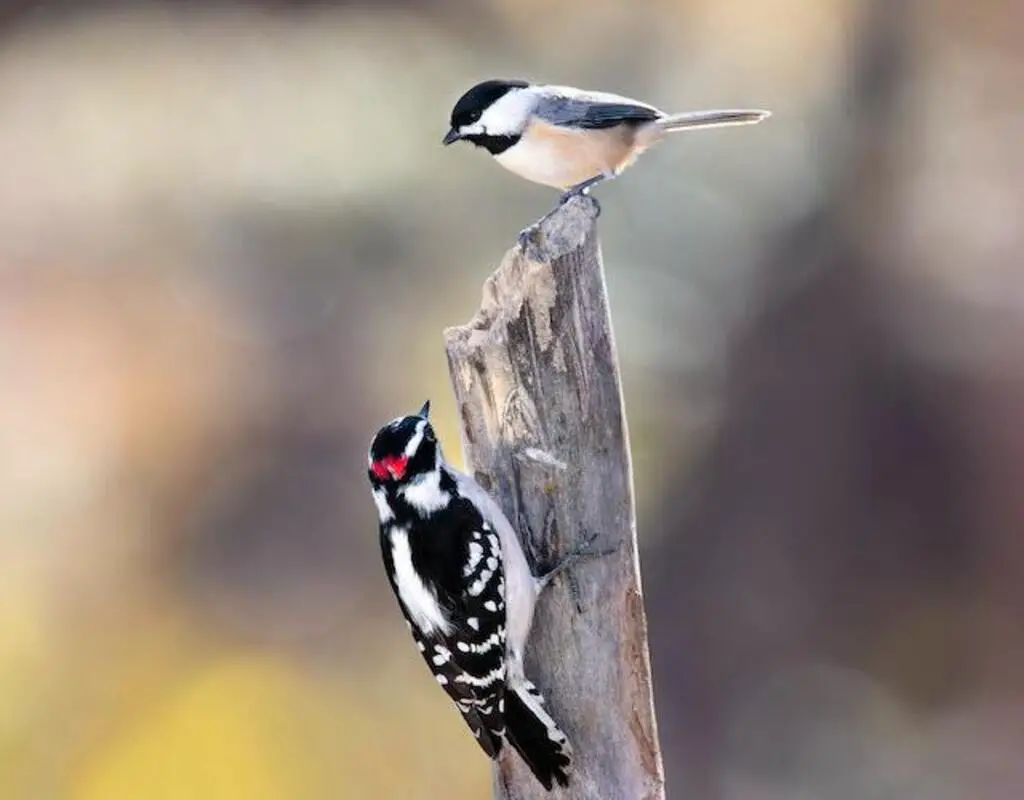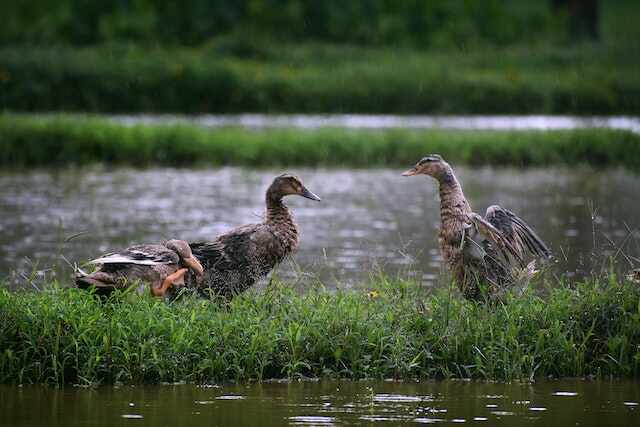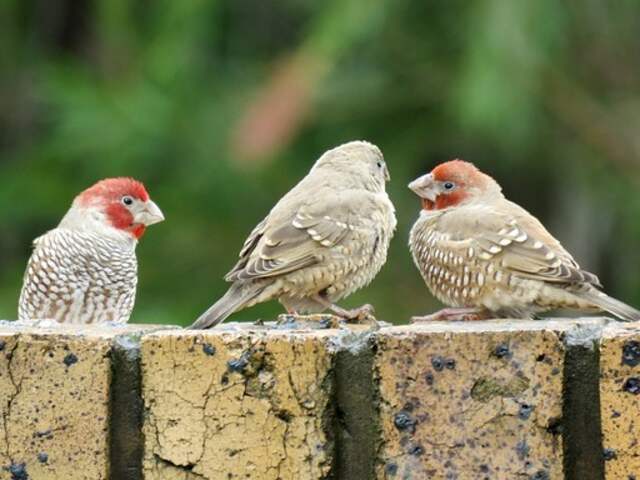Do Birds Crossbreed? Absolutely! It’s not just a love story for humans; birds have their own cross-species romances too. From flamboyant courtship dances to unexpected avian hookups, the world of bird mating is filled with surprising twists.
Join us on a whimsical journey as we explore the fascinating realm of feathered crossbreeding and discover why these interspecies connections have us chirping for more!
Table of Contents
- 1 Crossbreeding Overview
- 2 Types of Crossbreeding in Birds
- 3 Factors that Influence Crossbreeding in Birds
- 4 Examples of Crossbred Birds
- 5 The Debate on Crossbreeding in Birds
- 6 Conclusion
- 7 FAQs: Do Birds Crossbreed?
- 7.1 Can different species of birds crossbreed with each other?
- 7.2 How do birds choose their mates?
- 7.3 Are all bird hybrids fertile?
- 7.4 Can domestic birds be crossbred?
- 7.5 Are there any examples of crossbred birds?
- 7.6 What factors influence crossbreeding in birds?
- 7.7 What are the pros and cons of crossbreeding birds?
- 7.8 Can crossbreeding help with conservation efforts?
- 7.9 Are there any risks associated with crossbreeding birds?
- 7.10 Can birds crossbreed naturally, or is human intervention required?
- 8 Author
Crossbreeding Overview
Crossbreeding, also known as hybridization, is the process of breeding two individuals from different species or subspecies to produce offspring with a combination of traits from both parents.
This is a common practice in animal husbandry and agriculture to create new breeds or varieties that exhibit desirable traits.
In nature, crossbreeding can occur spontaneously when two related species overlap geographically and breed with each other.
The Fascinating World of Birds and Mating Habits
Birds are perhaps one of the most fascinating animals when it comes to their mating behavior. Different bird species have evolved various courtship behaviors that include singing, dancing, and elaborate displays of plumage.
These displays are used to attract mates and establish dominance over rivals in a competitive environment. Birds mate by either monogamy or polygamy.
Monogamous birds pair up for life while polygamous birds mate with multiple partners during a single breeding season. Some bird species also engage in cooperative breeding, where more than two adults participate in raising offspring.
Exploring Crossbreeding Phenomena in Birds
Crossbreeding or hybridization is not uncommon among different bird species although it is not as widely observed as in other groups such as plants or mammals. When two bird species interbreed, the resulting offspring are referred to as hybrids.
Intraspecific crossbreeding refers to the interbreeding between individuals belonging to the same species but from different populations or subspecies, whereas interspecific crossbreeding involves interbreeding between individuals belonging to different species.
There are several factors that influence crossbreeding among birds, including geographic isolation which can limit opportunities for birds from different populations or species coming into contact and exchanging genes.
Behavioral compatibility may also play a role in crossbreeding, where birds with similar courtship behaviors or mating rituals are more likely to mate.
Genetic compatibility is another important factor, where the genetic makeup of individuals from different species may be too different to produce viable offspring.
While there are numerous examples of crossbred birds, the practice remains controversial due to concerns over its impact on the natural ecosystem and potential for genetic abnormalities.
The debate over crossbreeding in birds continues as scientists seek to understand more about this fascinating phenomenon.
Types of Crossbreeding in Birds
Crossbreeding refers to the process of mating two different species to produce an offspring with combined traits from both parents.
This can occur naturally or through artificial means, and it has been practiced for centuries in domestic animals.
Crossbreeding is also evident in birds, both within and between species. In birds, crossbreeds are called hybrids.
Intraspecific Crossbreeding: Mixing Within the Same Species
Intraspecific crossbreeding refers to the mating of two birds belonging to the same species but with different varieties or breeds. This type of hybridization is common in domestic birds such as chickens and pigeons.
For example, domestic chickens are crossbred for various purposes, such as meat production or egg-laying capacity.
In some cases, this can lead to new breeds with unique characteristics that cannot be found in their parent varieties.
The pros of intraspecific crossbreeding include creating new genetic diversity within a species that may provide benefits such as better disease resistance or productivity.
Moreover, it allows breeders to select desired traits while removing unwanted ones from a gene pool, resulting in more desirable offspring.
However, there are cons associated with intraspecific cross-breeding as well.
Breeders often create special breeding pairs on certain traits like size or feather quality, which may lead to less healthy offspring if proper genetic diversity isn’t maintained throughout subsequent generations.
Interspecific Crossbreeding: Mixing Between Different Species
Interspecific hybridization involves breeding between two different bird species that may not usually mate together in nature due to geographic isolation or behavioral differences.
This type of hybridization often occurs accidentally when bird populations overlap their ranges, leading to unforeseen consequences.
One example is the red-shafted flicker and yellow-shafted flicker; these bird species have a range overlap zone where they can hybridize and produce offspring with characteristics of both parents.
In other cases, artificial insemination or genetic engineering techniques are used to breed different bird species.
The pros of interspecific crossbreeding include introducing new traits and behaviors that may not be found within a single species.
For instance, the liger (lion-tiger hybrid) has features common to both its parent animals like the lion’s mane and tiger’s stripes.
Additionally, hybrids have been useful in reintroducing endangered species back into nature. However, there are also cons associated with interspecific cross-breeding.
One potential concern is the genetic mismatch between parental genes that could lead to unhealthy hybrids resulting in low survival rates or sterility.
Additionally, hybrids may have difficulty adapting to changing environmental conditions since their genetic makeup is not adapted for a specific habitat.
While crossbreeding can result in interesting combinations of traits and behaviors in birds, it can also have downsides like reduced overall health or negative effects on natural ecosystems when accidental breeding occurs outside usual ranges.
Breeders need to exercise caution when mixing different species, while taking care to maintain genetic diversity within their own gene pool for optimal outcomes.
Factors that Influence Crossbreeding in Birds
The process of crossbreeding in birds is influenced by several factors including geographic isolation, behavioral compatibility, and genetic compatibility. These factors are critical in determining whether birds can mate and produce viable offspring.
Geographic Isolation
Geographic isolation is one of the primary factors that influence crossbreeding in birds. When two species of birds live far apart from each other, they are less likely to mate and produce hybrid offspring.
This is because the distance between them limits their exposure to each other and reduces the possibility of mating.
However, if two bird species share the same geographic location, it increases their chances of mating to produce hybrid offspring.
Geographic isolation can also occur due to man-made barriers such as highways or cities that restrict bird movement.
Behavioral Compatibility
Behavioral compatibility between bird species is another important factor that influences crossbreeding. For instance, some bird species may have different breeding seasons or mating rituals which make it hard for them to mate and produce viable offspring.
Furthermore, certain behavioral traits such as aggression and territorialism can prevent hybridization from occurring between different bird species.
Birds with these traits may be less tolerant of other bird species attempting to breed with them.
Genetic Compatibility
The genetic makeup of a bird plays a significant role in determining whether it can successfully breed with another bird species. In many cases, hybridization occurs between closely related bird species that share similar genetics.
However, some genetic differences may cause infertility or result in deformities or health problems in their offspring.
Genetic compatibility is therefore an essential factor considered during crossbreeding programs, as it ensures healthy offspring production without compromising their health.
Understanding the factors influencing crossbreeding in birds is vital for scientists who want to promote genetic diversity through hybridization programs successfully.
While geographic isolation, behavioral compatibility, and genetic compatibility are all essential factors to consider in crossbreeding birds, other factors such as habitat disturbance and climate change may also play a role in determining the success of hybridization programs.
Despite this, it is clear that careful consideration of these factors can help to promote genetic diversity while also ensuring the health and viability of crossbred offspring.
Examples of Crossbred Birds
The Liger vs. The Tigon. When it comes to crossbred birds, there are a few notable examples that stand out. However, before diving into these examples, it’s important to note that hybridization between different bird species is relatively rare.
In fact, most hybrid birds are the result of breeding within the same genus. With that said, one of the most famous examples of hybridization in animals is the liger and tigon.
A liger is a hybrid cross between a male lion and a female tiger, while a tigon is a crossbreed between a male tiger and female lion.
The liger outweighs both parents and holds the record as the largest cat in the world.
They have traits from both lions and tigers, such as stripes on their fur, but they might also have manes like lions or no mane at all like tigers.
Tigons on the other hand generally resemble lions more than tigers, with their lighter-colored fur and shorter manes.
The Mule Duck
Another example of crossbred birds includes Muscovy ducks bred with Pekin ducks to create what’s known as mule ducks. These hybrids typically have better meat quality than either parent breed alone can produce.
While these specific crossbreeds may be interesting to some people, it’s important to remember that creating hybrids comes with potential risks and drawbacks.
The Debate on Crossbreeding in Birds
Arguments for Crossbreeding:
One argument for crossbreeding in birds is that it can increase genetic diversity within captive populations, which can lead to healthier individuals.
Additionally, new desirable traits can be introduced through this process which may benefit conservation efforts by increasing survival rates in certain environments.
Arguments Against Crossbreeding:
On the other hand, some argue that crossbreeding can lead to health problems in the offspring, especially if the two parent species have vastly different genetic makeups.
Furthermore, creating hybrids can also disrupt natural ecosystems if they are released into the wild, where they may outcompete native species for resources.
Conclusion
While crossbreeding in birds can be fascinating and even beneficial under certain circumstances, it’s important to approach this topic with caution. Creating hybrid birds comes with both potential benefits and drawbacks.
By considering the arguments for and against crossbreeding and understanding the potential risks involved, we can make more informed decisions when it comes to conservation efforts and breeding programs.
Ultimately, our goal should always be to promote healthy populations of birds while minimizing harm to natural ecosystems.
FAQs: Do Birds Crossbreed?
Can different species of birds crossbreed with each other?
Yes, different bird species can crossbreed, although it is less common compared to other groups like plants or mammals. When two bird species interbreed, the resulting offspring are called hybrids.
How do birds choose their mates?
Birds choose their mates based on various factors, including courtship displays, songs, plumage, and behavioral compatibility. These elaborate rituals and displays help attract mates and establish dominance over rivals in a competitive breeding environment.
Are all bird hybrids fertile?
Not all bird hybrids are fertile. Some hybrid offspring may be infertile or have reduced fertility due to genetic differences between the parent species. Genetic compatibility plays a crucial role in determining the fertility and viability of hybrid birds.
Can domestic birds be crossbred?
Yes, domestic birds such as chickens and pigeons can be crossbred. Intraspecific crossbreeding, which involves mating different varieties or breeds within the same species, is common in domestic birds. It allows breeders to create new breeds with desired traits like meat production or egg-laying capacity.
Are there any examples of crossbred birds?
Yes, there are examples of crossbred birds. One notable example is the mule duck, which is a hybrid of Muscovy ducks and Pekin ducks. These crossbred ducks often exhibit better meat quality than either parent breed alone.
What factors influence crossbreeding in birds?
Factors such as geographic isolation, behavioral compatibility, and genetic compatibility influence crossbreeding in birds. Birds from different populations or species may not come into contact due to geographic barriers, and behavioral differences or genetic incompatibility can also limit crossbreeding.
What are the pros and cons of crossbreeding birds?
Crossbreeding birds can introduce new traits and behaviors, promote genetic diversity, and potentially benefit conservation efforts. However, it can also lead to genetic abnormalities, health issues in hybrid offspring, and disruptions in natural ecosystems when accidental breeding occurs outside usual ranges.
Can crossbreeding help with conservation efforts?
Crossbreeding can play a role in conservation efforts by introducing genetic diversity and increasing survival rates in certain environments. Hybrids can be useful in reintroducing endangered species. However, careful consideration of genetic compatibility and potential ecological impacts is crucial.
Are there any risks associated with crossbreeding birds?
Crossbreeding birds can pose risks such as reduced overall health in hybrid offspring and negative effects on natural ecosystems if hybrids are released into the wild. Maintaining genetic diversity and monitoring the long-term health and adaptability of hybrids are important considerations.
Can birds crossbreed naturally, or is human intervention required?
Birds can crossbreed both naturally and through human intervention. Natural crossbreeding occurs when bird populations overlap and interbreed. Human intervention, such as artificial insemination or genetic engineering techniques, can also be used to deliberately breed different bird species.






